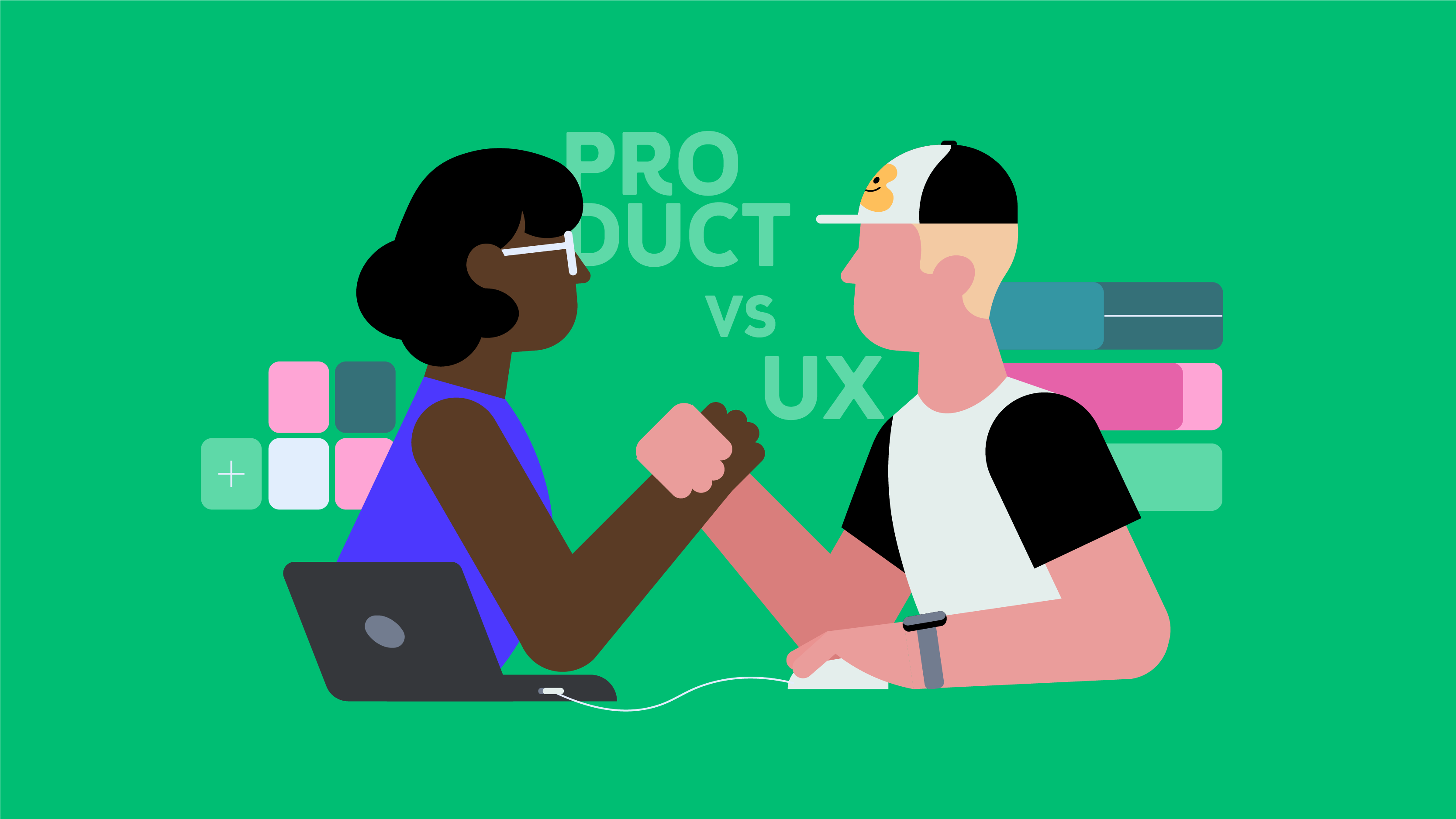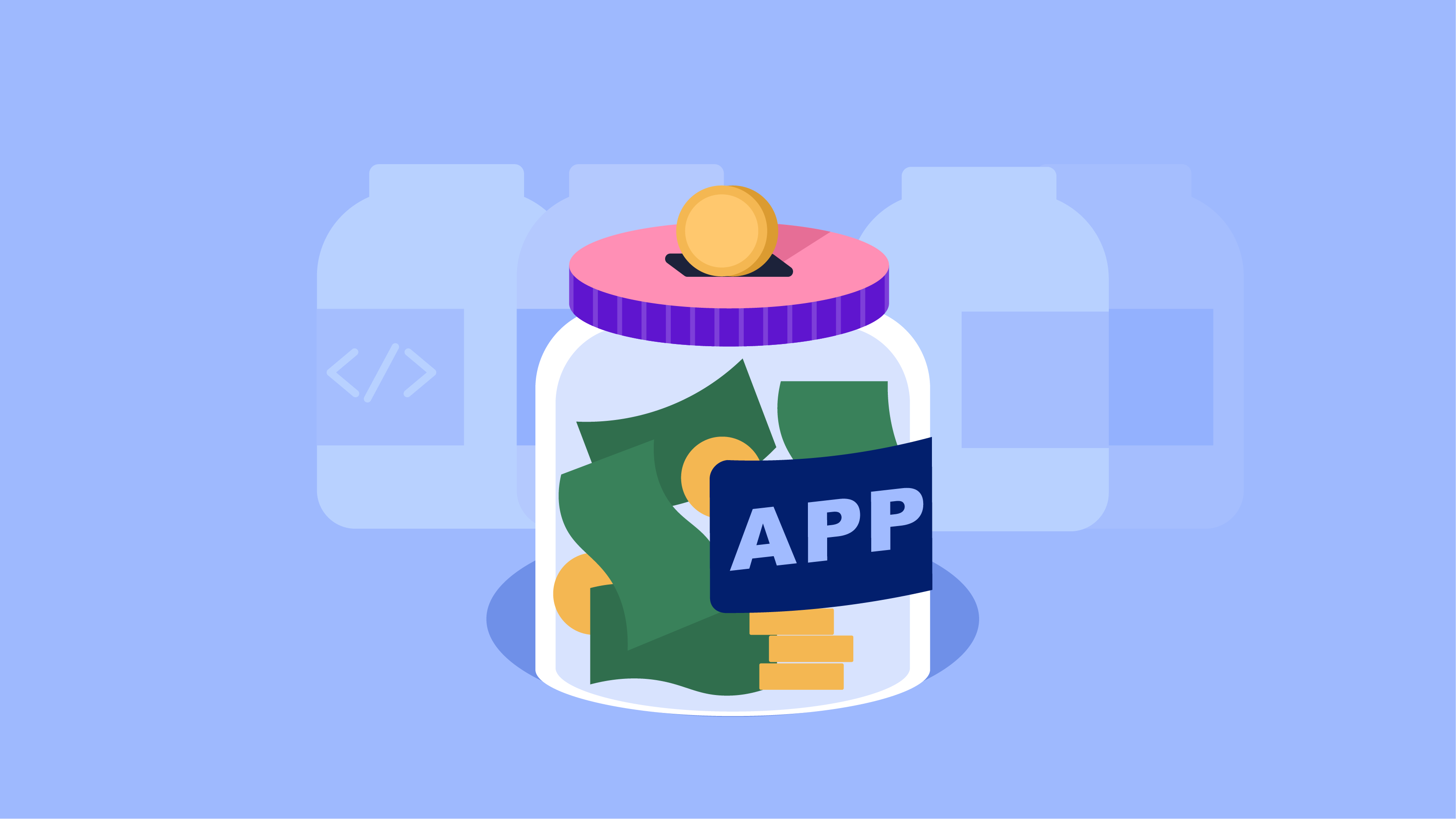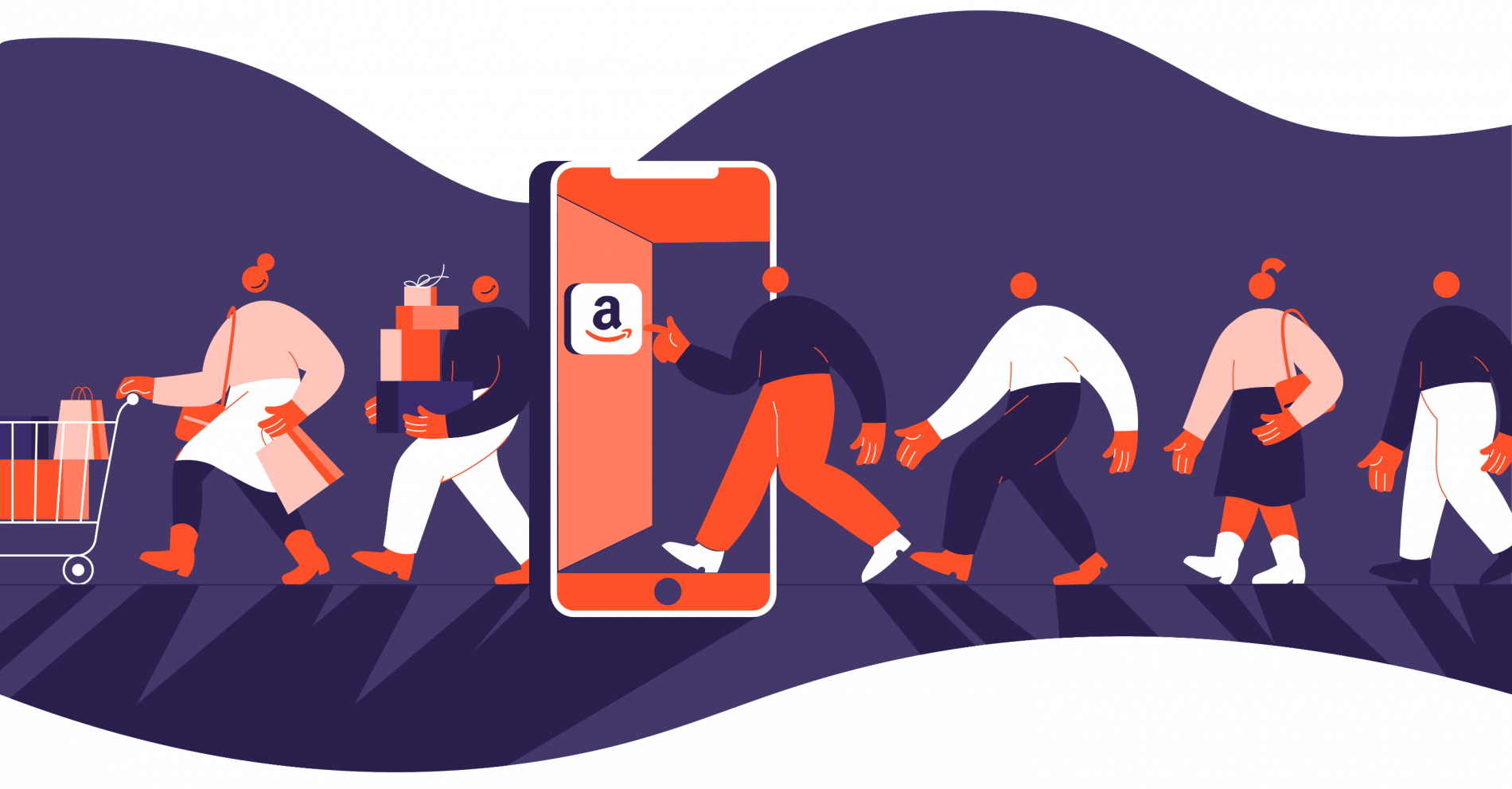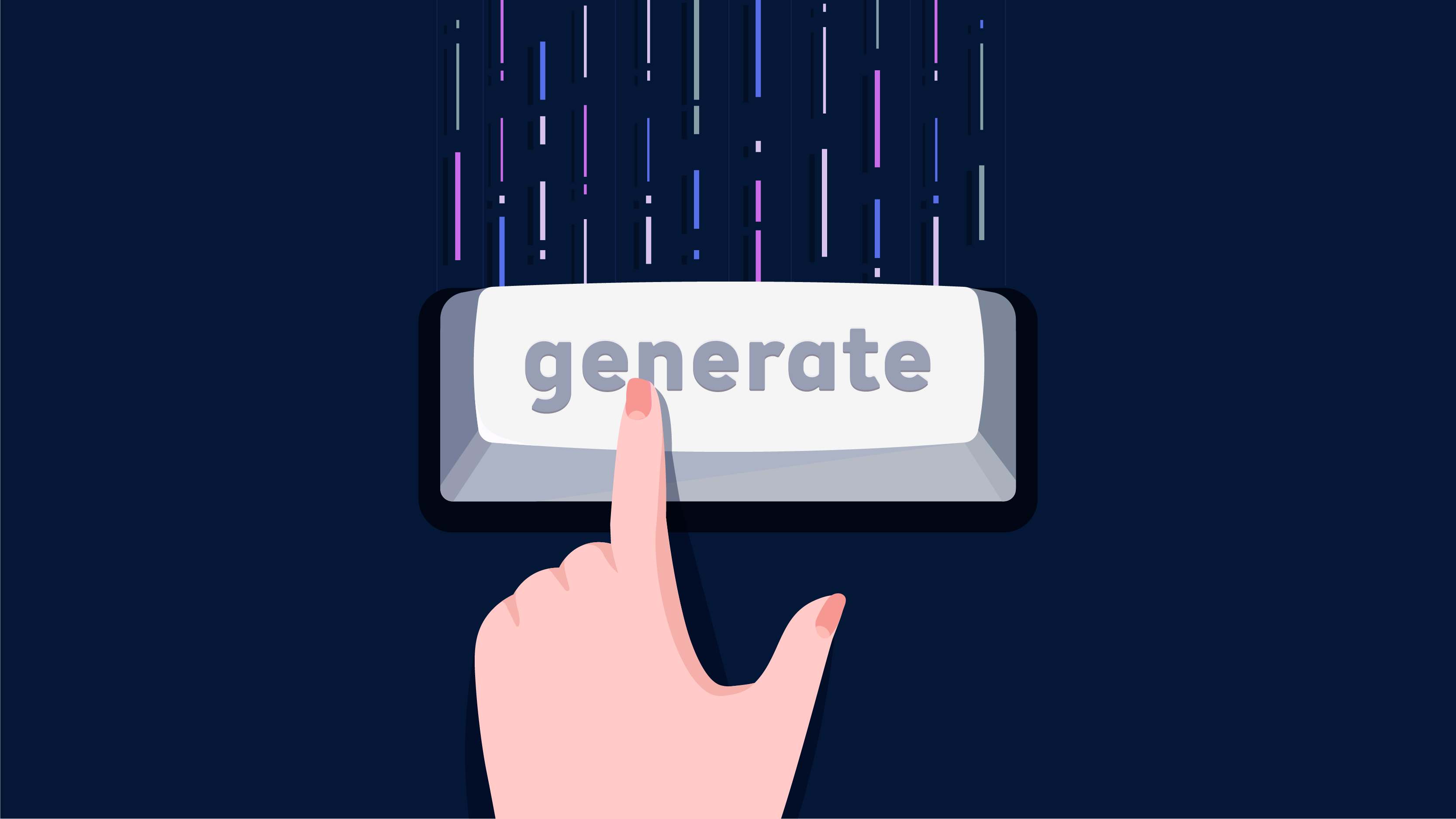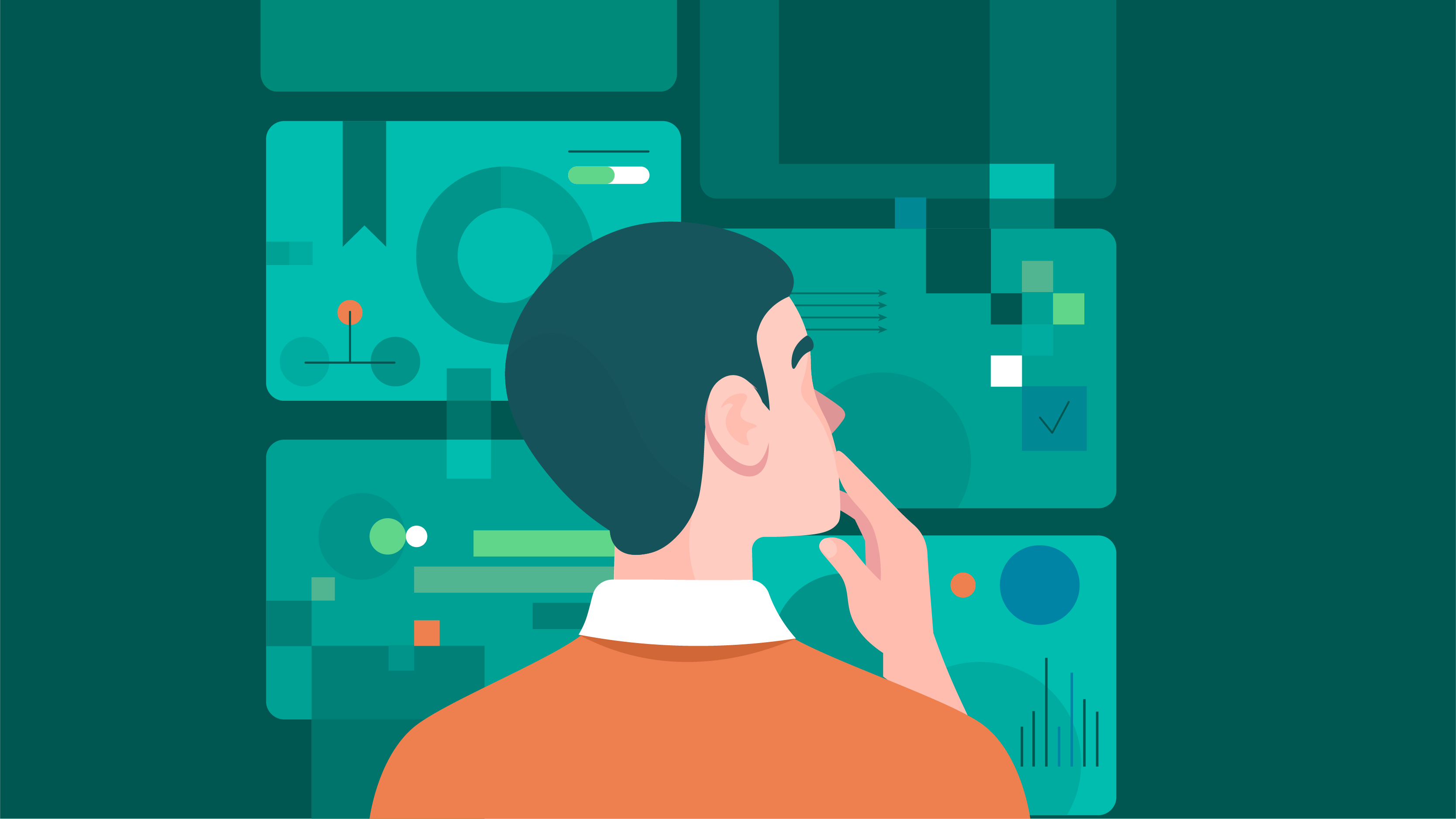Breakfast like a king, lunch like a queen and dine like a pauper. Nutritionists created this saying, we guess. Because this rule allows people to live healthier lives, but it doesn’t mean that everybody wants to stick to the rule.
“What are you talking about?” – you ask. Well, we just want to say that everyone has different eating habits, but the majority of people tend to do the same thing — use online food delivery services. Someone orders healthy food, and they want to be in good shape, someone prefers burgers, pizza, and other fast food.
Eventually, no matter what they order, people do it via mobile food delivery apps, and today such apps become more popular. Self-isolation contributes to it. So if you decide to build an on-demand app for food delivery, you will gain a profit and provide your customers with new buying opportunities.
But the process will require many investments, not only financial ones. There are many challenges on your way to consider, so read our development guide and start your delivery business right away.
What Is an On-Demand Delivery App?
The on-demand app is an app that allows you to order any type of service, but they are provided to you only on demand. Everything is simple. On-demand services can be ridesharing, hotel booking, cloud computing services, etc. Food delivery is also one of them. One tap on your smartphone — and you order whatever you need.
Food delivery remains the most popular niche in on-demand business, and it is not surprising that food delivery global revenue is expected to exceed $164.5 Billion by 2024, according to an IMARC Group report. So food ordering app development is widespread, and it provides you with additional ways of profit.
How Food Delivery Apps Work
The process starts with ordering when a customer specifies in the app the dishes they want to order from the list. The restaurant receives the order via the software, estimates the delivery time, and sends the information back to the customer.
The restaurant starts cooking and packing the order, and then the courier of the eatery (or an independent courier from a delivery service, like Glovo) delivers the food to the customer. It is worth noting that the food delivery app should have at least two versions — for consumers and couriers.
This article may be interesting for you: Restaurant Web Designs
Food Delivery Business Model
For a start, when you plan to create an on-demand food delivery app, you need to decide what business model will be preferable in your specific case, and what is more convenient for you.
- The order only model. This model implies that the app serves as a marketplace for different restaurants and eateries like a pizzeria, and each of them has its fleet of couriers. Thus, such apps charge a specific commission for each order, and third-party couriers are not involved in the service.
- The order and delivery model. This model adds third parties like independent couriers to the app. As for the common differences with the order only model, third-party courier service is the only difference. That is, restaurants are looking for couriers near their location and offer them to deliver the order.
- The fully integrated model. And the last model is less widespread, but it is used as well. Such apps are created by a specific eatery that cooks a range of dishes (diet and health food for athletes, or burgers and fast food, for example). And the food is already cooked. When consumers order it, the meal is reheated or chilled, depending on its type, and the eatery sends its courier to deliver the order.
How Do Food Delivery Apps Make Money?
Once the business model is selected, you need to determine the revenue model for your app, how you will get profit from it. Let’s look through the ways of monetization for food delivery apps.
- Commission fees. When you are making a food delivery app, this monetization method is the one you should consider first. If your app is a marketplace for eateries, they may pay you a fixed commission fee per month. But the fee amount may vary depending on seasonal deviations.
- Delivery fees.If some cafes or restaurants do not provide delivery services, you may offer your couriers and charge delivery fees. The delivery fee amount may vary depending on the delivery distance.
- Peak pricing.On-demand apps often provide a peak pricing revenue model. For example, if there is a higher demand for food delivery on Friday evening, users will pay a more substantial service fee. When the demand is low, the service fee isn’t changed. This model is actively used by Uber Eats, for example.
This article may be interesting for you: Uber like App Development
- Ads.The advertising monetization model prevails in all types of apps. Any restaurants may add their ads in your app, and you will get a fixed monthly fee for each advertising.
This article may be helpful for you: Business Plan for App
How To Create A Food Delivery App: Development Steps
How to start a food delivery service business wisely and consider each detail? Before we proceed to the step-by-step development guide, we would like to mention that if your market lacks good delivery services, you may create an on-demand delivery app clone of Postmates or any other food delivery service. But you should conduct detailed market research to figure it out.
Monitor Hot Trends
That is what makes your software crowd-pleasing and stand out among other competitors. For instance, you can provide food ordering services on social media, as Domino’s Pizza did it first. Users may order food just using Twitter or Facebook accounts.
Also, artificial intelligence cannot be discarded. Chatbots and virtual assistants enhance the customer experience, make it more personalized, and provide consumers with smart ordering features.
Besides, you need to think about the owners of smart wearables. Smartwatch users prefer using food delivery services via their devices. It will require additional investments; however, it may substantially increase customer loyalty. Simply put, your app should be available on as many devices as it is possible.
Choose A Business Model
Your goal is to choose a business model appropriate for your future mobile app. As we listed above, there are three existing models for the food delivery business, but the first and second ones are primary and used mostly. That is, the order only model and the order and delivery model — it is up to you.
However, if you want to distribute your foodservice and promote it, providing consumers with exciting culinary delights, then the fully integrated model is your choice.
Target Audience And Market Research
The next problem to be solved. Considering the particularities of your food delivery app, you need to analyze and study the market to know everything about your niche. Imagine that you intend to build an app for your vegetarian restaurant. You should know how popular this niche can be, how many potential consumers exist there, etc.
The research process is time-consuming, but it helps you build the basis for your future food delivery business. Especially if you already have such a company, but you still haven’t gone online. So, analyze your target audience, their preferences, habits, age, gender, their expectations. It is a suitable way to understand better how to start a food delivery app.
Food Delivery App Design
A consumer version of the app must have a well-thought-out UI and UX design. It doesn’t mean that a courier version should be built carelessly. But the consumer is the one your app is created for. The navigation process must be accessible and user-friendly, and the overall design shouldn’t be too complicated.
When you analyze the market, you should look through existing food delivery apps and the peculiarities of their UX design. Remember that the food ordering process shouldn’t be longer than 3-4 steps; otherwise, consumers won’t spend their time on a complex app.
To overcome this problem and avoid failures, you can make use of Cadabra Studio skills and services. We can become a troubleshooter for you and provide top-notch design and software development services that will influence your business growth and income.
Development Process
At this stage, the masters of code and designers start doing their job. If you are not a programmer, we recommend you to delegate this task to professionals who will explain to you how to start a delivery business for food. Software developers will take into account your requirements that should be covered in the specification.
At Cadabra Studio, we work on the basis of Agile methodology, and the customer approves each development sprint. That is, we don’t start creating the next sprint until the latter one is approved.
During mobile app development, our team pays special attention to the client’s unique requirements and needs. We prioritize open communication channels, providing regular updates and progress reports to ensure you are informed and involved in every decision-making process. This joint approach allows us to achieve a high level of transparency, accelerate the search for optimal solutions, and achieve the desired result.
In addition, it is important to create not just mobile apps, but a solution that resonates with users and stimulates business development. We will create future-proof products: intuitive, visually attractive and easy to navigate.
Testing And Launching
This step is a must-have stage in any software development, and it cannot be disregarded. Do you know that 48% of users will not use an app again if it has a low-level performance, according to Global App Testing?
It means that QA engineers should conduct all the required types of testing and ensure that your app is bug-free. Each ignored bug may cost you tons of money, remember that.
In the context of mobile apps for food delivery, testing becomes even more critical due to the confidential nature of the service provided. QA engineers must carefully evaluate features such as order placement, payment processing, and real-time tracking to ensure a smooth and reliable user experience. This may require experience in the development of payment systems and fintech products.
In addition, such a part of the app development process as testing should include scenarios simulating peak hours and high volumes of orders. This is simply necessary to ensure that the application can handle the increased traffic without crashing or slowing down.
Given the importance of on-time deliveries in the food industry, any disruptions or performance issues can lead to customer frustration and damage to the program’s reputation. This applies not only to mobile, but also to web apps.
Moreover, the security check is critically important as you are dealing with sensitive user data. Your customers trust you with their payment information and personal data. That is why quality control engineers must conduct thorough and regular security assessments to identify and address vulnerabilities that could potentially compromise user privacy and data integrity.
Marketing and Customer Acquisition
It may sound strange, but in an era when mobile app development is at such a high level and the latest technology sector is developing at a fantastic pace, marketing itself is no less important part of the product’s success than the efforts of mobile app developers.
Here, your focus shifts from development to reaching potential users and turning them into loyal customers. This is the main goal that will be your beacon at the end of the journey, which is why it is so important to remember it.
Here are some effective strategies to promote your food delivery app so that it is available on all mobile devices and quickly attracts new customers.
Communication through social networks
You need to use all possible platforms, such as Facebook, Instagram, Twitter, etc., for targeted advertising campaigns.
In the marketing phase of mobile app development, it is very important to use the power of visual content to showcase mouth-watering dishes, promotions, and discounts to entice users to download and use your app. It is also worth consulting with specialists providing UX design services. They will help to correctly place content both in social media and in the application itself.
Search Engine Optimization (SEO)
Do not forget to optimize your app content for relevant keywords related to food delivery in your target market. This will improve your visibility on search engine results pages (SERPs) and drive organic traffic to your app. This part is also very important for mobile app development.
Content marketing
It doesn’t matter whether it’s iOS or Android development; content marketing is a critical component of promoting your product on all mobile devices. You need to create not only attractive but also useful and valuable content. Those mobile apps that use a clear and structured content strategy for advertising will win.
Think about how your product looks and is perceived. Use blog posts, articles, videos, and infographics related to food trends, healthy eating tips, recipes, and local cuisine to promote. Share this content on social media and other relevant platforms to engage and engage your audience. This approach will also help attract new investments to your app development process.
Partnership with influencers
Mobile app development services professionals are always thinking ahead. They remember that in the development of mobile and web apps it is important not only to offer new unique features, but also to inform the user about their existence. Partnering with influencers is one of the most effective ways to do this.
Food mobile apps are promoted by partnering with food bloggers, vloggers, social media influencers and local celebrities who have a large following and influence in your target market. Encourage them to promote your app through sponsored posts, reviews, and endorsements to reach a wider audience and build trust.
The marketing team must carefully select influencers and explain exactly what components of your digital product are unique and need to be highlighted. This will bring a large number of users, and your task will be to retain them and improve loyalty. And here the next point comes into the picture.
Referral programs
For both web apps and mobile products, it is important to retain users and strengthen their trust in you. A good way to do this is to implement a referral program. This encourages existing users to recommend mobile apps to their friends, family and colleagues to download and use your digital products.
What can a referral program include? How to attract the attention of users? Offer discounts, free gifts or loyalty points for successful referrals, encouraging word-of-mouth marketing and increasing user engagement. Focus on user needs. Remember that they may differ slightly in iOS and Android development.
What else?
In the promotion of all mobile apps, including food ones, it is very important to create a strong brand that resonates with your target audience. You need a unique brand voice that will not be similar to any of the competitors.
It is also worth thinking about a clear visual identity and messaging that reflects your values, mission, and the convenience and quality of your services. Ultimately, collect user feedback to understand their needs, preferences, and pain points, and use this valuable information to continually improve your apps and service offerings.
We at Cadabra Studio do not only have experience in creating outstanding UX/UI design. We know very well how to make the digital product available on all mobile devices. And we will be happy to advise you on marketing, create a unique promotion strategy, and lead you to success. Let’s talk.
Key takeaways
- To start your food delivery service wisely, you should conduct detailed market research to identify gaps in delivery services. Monitor hot trends such as social media food ordering and smart wearables usage.
- Consider integrating artificial intelligence features like chatbots for personalized experiences.
- Decide on a business model suitable for the app: order only, order and delivery, or fully integrated. Evaluate the potential of fully integrated models for promoting culinary delights and expanding services.
- Gather data on target audience demographics, habits, and expectations to tailor the app’s offerings.
- Prioritize user interface (UI) and user experience (UX) design for consumer satisfaction. Ensure simplicity in navigation and minimize the steps in the food ordering process.
- Delegate coding tasks to professionals and follow Agile methodology for iterative development. Collaborate closely with developers to incorporate unique requirements and ensure transparency.
- Conduct comprehensive testing to ensure bug-free performance and reliability. Prioritize security checks to protect user data and maintain trust.
- Utilize social media platforms for targeted advertising and visual content marketing. Optimize app content for search engines and implement a structured content strategy. Partner with influencers and implement referral programs to attract and retain users.
Food Delivery App Features
Don’t even think that we may forget about basic features for an MVP of your food delivery platform. We have listed all the development steps, and now you know how to start a food delivery app. But some features should be included in your food ordering system. Besides, features may be different for the consumer app and courier app.
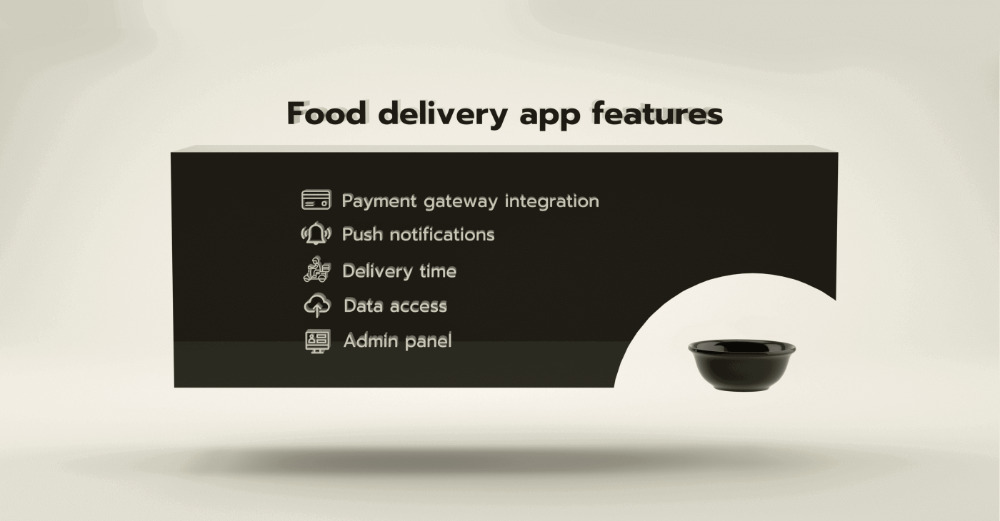
First, we will describe basic features for all versions — they must be available by default.
- Data access. The food delivery app contains tons of data like images, lists of restaurants, cuisines, ingredients, addresses, etc. All data should be available on-demand, so developers usually use various APIs and databases to store all the required information.
Users should have access to it at any time.
- Payment gateway integration. Users need to make payments, restaurants, cafes, and couriers need to receive the payment.
Payment gateways contribute to secure payment processing and easy money management.
- Delivery time. Couriers and eateries estimate the delivery time, and it is displayed in users’ apps. Remember that the estimated time must be as accurate as possible.
Of course, it doesn’t depend on developers or you, as the app owner, but you need to promote the policy that eateries have to deliver everything within the estimated time.
- Push notifications. Notifications allow both parties to stay updated and see all information on time.
Besides, push notifications may also contain information about discounts and bonuses. So don’t forget to include this feature.
- Admin panel. This feature implies the development of a web page that will be used by admins of restaurants and app owners.
Admins may manage their profiles, add/remove information, and so on.
Consumer App Features

It is time to proceed to the necessary features for a consumer version of your food delivery app.
- Social sign-in. Customers should register in the app first. But the registration process should be quick and easy.
That is why you need to add the possibility to register via existing social media profiles — Facebook, Twitter, or using Google account.
Some information, like payment card data and personal information, must be filled out additionally, but the whole process shouldn’t be time-consuming.
- Search. If you create an app using the order only or the order and delivery model, the app will contain lists of restaurants, cafes, and fast-food eateries.
The search feature helps consumers find the desired items quickly.
Besides, the search should include filters that allow users to select what they need by category.
- Order placement. This feature includes a shopping cart where users add dishes they want to order. Once the selection process is over, users go to the cart and tap the Order button.
Then the confirmation on display shows that the ordering process is complete successfully, and consumers are waiting for the delivery.
- Tracking and location setting. Couriers need to know the precise location of consumers to deliver food on time. And consumers need to indicate the address or put a mark on maps.
When the delivery is performed, consumers should be able to track the delivery in real-time mode. It is a very convenient way to monitor the location of couriers, and customers become more loyal.
- Rating/reviews. Eateries that value their reputation want to know whether customers are satisfied with their services. So they can see how many stars users gave them.
Also, consumers may evaluate the quality level of services when they see the rating of a restaurant. And reviews about each eatery share an overall picture of service level.
- Loyalty program. The loyalty program always attracts more users since they know that the usage of your food delivery service provides them with certain benefits.
Think about some rewards and bonuses for your loyal and regular customers.
Courier App Features
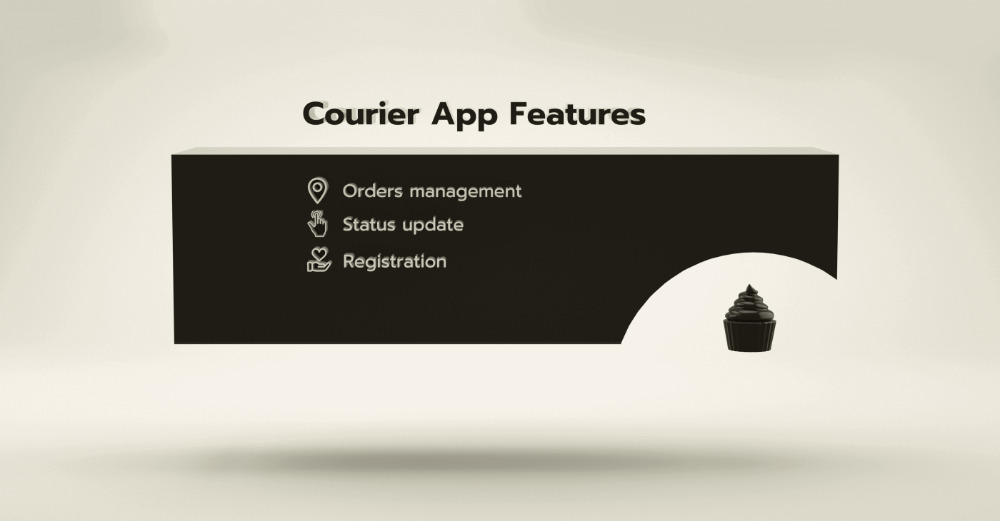
Courier delivery app development is also crucial since couriers need to have a well-designed app at hand. It doesn’t have a lot of specific features, but you should consider them as well.
- Registration.As well as in a consumer app version, couriers should register and fill out their real personal data, and it is recommended to add a photo.
Registration can be done via a social media profile.
- Orders management. Here, delivery personnel may get acquainted with all the details of each order, take or reject it, indicate the estimated time, see the pickup and drop locations, etc.
Also, couriers should be able to increase the delivery rate in case the demand is higher, or the destination is too far.
- Status update. Couriers should be able to update the status of delivery — approved/rejected, order delivered/picked, etc.
When the delivery is done, couriers get their payment. Payment can be made by cash or via the app.
Tech Stack For On-Demand Food Delivery App Development
You have discovered how to build a food and grocery delivery app with the right list of features. What about tools that may be used for food delivery app development? We can show you an approximate technology stack our development team can make use of.
- Front-end (for admin panel): JavaScript, HTML5, CSS
- Languages: Swift (iOS), Kotlin or Java (Android)
- Back-end: Java, Ruby, Python
- Databases: MongoDB, MySQL
- Payment gateway: Braintree, PayPal, Stripe
- Geolocation: Google Maps API
- Utilities: Facebook SDK, Twitter SDK, Gmail SDK (for registration)
- Storage: AWS, Azure
The development team may include at least one Android or iOS developer (or both of them), one back-end developer, two UI/UX designers, one or two QA engineers. The number of specialists may vary depending on the complexity of your app.
How Much Would It Cost To Start A Delivery App?
The detailed guide on how to start your own delivery service app has one minor issue we need to address. This is an approximate cost of a food delivery app. The price of your future food delivery app depends on the number of features, number of platforms, and integration of additional hi-tech things.
An approximate cost of food delivery service for a mobile app may vary from $25,000 to $70,000. But a detailed estimate requires us to conduct UX design research. So we will be able to show you precise figures only when we will elaborate on all the details with you and take your requirements into consideration.
Drop us a line if you want to have a detailed estimate for the development of your food delivery service for any platform. Remember that each app development has a plethora of issues that cannot be ignored, so estimation is a time-consuming but heavily responsible stage. Looking forward to details from you, and we hope to create value for you during these hard times.
See also our guide on how to create an Uber-like app for lawn care business, here: on-demand mowing app development guide.






